Saltmarsh and Seagrass Restoration and Protection
at Delehide Cove
William Schubert, Dickinson Marine Lab
Saltmarshes and seagrass meadows are critical components of estuarine ecosystems. They provide many services to society including water quality maintenance, storm surge abatement and primary production. These habitats are also critical habitat in the life cycles of numerous animal species including egrets, herons, clapper rails, diamond back terrapins, and river otters. Saltmarshes and seagrass meadows act as "nursery" habitat for numerous recreationally and commercially important fishery species such as red drum, brown shrimp and the blue crab. This nursery habitat provides the young of these species protection from predators, shelter from currents and food. These species utilize saltmarsh until they are motile and can feed and avoid predators in the open water environment. Due to their essential role in estuarine fishery species life histories, saltmarshes and seagrass meadows are the engines that sustain the recreational and commercial fisheries.
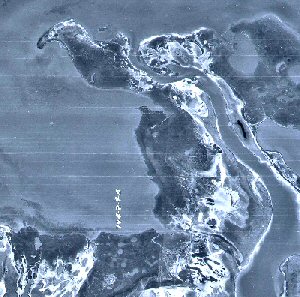
West Bay, a sub-bay of the Galveston Bay system, has suffered extensive loss of saltmarsh and seagrass meadows. Between the 1950's and 1990's, over 5,200 acres of saltmarsh were lost in West Bay as well as all 2,000 acres of seagrass meadow. The primary culprit for this loss is land surface subsidence from ground water withdrawal. Historically, the City of Houston and local industries pumped groundwater to meet the water demands. As the water was withdrawn, the ground compressed lowering the elevation of West Bay marshes as much as one foot. Because saltmarshes grow in a narrow elevation range, this subsidence drowned the lower portions of the marshes. The subsidence also submerged protective spits and reefs that offered the marshes protection from erosion. This loss of protection left the remaining marsh venerable to loss due to chronic erosion. Other reasons attributed to marsh and seagrass loss in West Bay include conversion to housing developments and canal dredging.

In response to this habitat loss, Texas Parks & Wildlife Department has worked within diverse partnerships to protect some of the remaining habitat and restore some of what has been lost. One recently completed restoration project is Delehide Cove Marsh Restoration and Protection Project. This project was awarded one of two National Wetland Conservation Awards from the United States Fish and Wildlife Service in June 2005. This recognition was bestowed to the entire project team and reflected upon the partnerships that are essential to the completion of habitat restoration projects on the Texas Coast. Along with TPWD, contributors to the project included the United States Fish and Wildlife Service, Texas General Land Office, Galveston Bay Estuary Program, Galveston Bay Foundation, National Marine Fisheries Service, Pirate's Beach Property Owner�s Association, Reliant Energy, Texas GenCo, Blackard Industries, West Galveston Island Properties Association, and the Fish America Foundation.
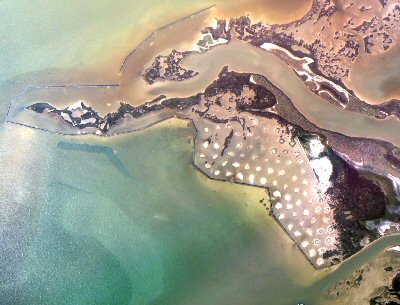
An essential part of this project was protecting the remaining saltmarsh from erosion. Over
eight thousand feet of breakwaters have been constructed to simulate the functions of the spits
and reefs prior to subsidence. Over 200 acres of saltmarsh and other estuarine habitats are
protected from erosion by these breakwaters. The breakwaters were constructed from sand filled
geo-textile tubes.
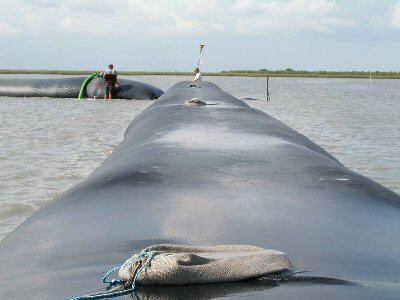 This breakwater material was chosen because it relatively cost effective when
compared to rock breakwaters. A drawback to using these materials is their lifespan.
These industrial fabrics are expected to last up to 25 years; however, numerous factors that
reduce this lifespan. These factors include boat strikes and vandalism. TPWD has installed
numerous markers in an attempt to prevent boat strikes. The vandalism has been conducted by
one of the user groups that would benefit most from these marsh restoration projects,
recreational fishermen. TPWD staff has found intentional cuts in the breakwaters that are used
by fishermen for mooring on the leeward side of the breakwaters and for use as rod holders. The
cuts allow sand to escape from the breakwater and can significantly shorten their lifespan. If
you see fellow fishermen or other people vandalizing these breakwaters, please inform them of the
purpose of these breakwaters or contact TPWD personnel.
This breakwater material was chosen because it relatively cost effective when
compared to rock breakwaters. A drawback to using these materials is their lifespan.
These industrial fabrics are expected to last up to 25 years; however, numerous factors that
reduce this lifespan. These factors include boat strikes and vandalism. TPWD has installed
numerous markers in an attempt to prevent boat strikes. The vandalism has been conducted by
one of the user groups that would benefit most from these marsh restoration projects,
recreational fishermen. TPWD staff has found intentional cuts in the breakwaters that are used
by fishermen for mooring on the leeward side of the breakwaters and for use as rod holders. The
cuts allow sand to escape from the breakwater and can significantly shorten their lifespan. If
you see fellow fishermen or other people vandalizing these breakwaters, please inform them of the
purpose of these breakwaters or contact TPWD personnel.
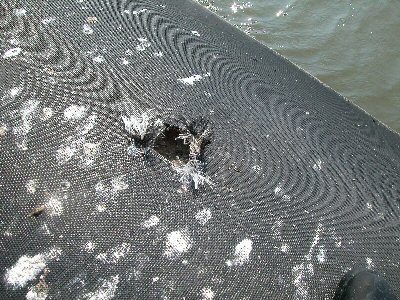
The marsh restoration at Delehide Cove utilized a hydraulic dredge to pump sand into marsh mounds. This technique was pioneered by TPWD at the nearby Jumbile Cove project. This technique results in gentle slopes that approximate a natural marsh and result in wide "edge" subject to tidal inundation. It is this edge habitat that has the highest use by the young of fishery species. Another benefit of constructing the breakwaters has been the regrowth of seagrass meadows in West Bay. These breakwaters have led to increases in water clarity which as fostered seagrass growth at several of these projects. Currently, approximately five acres of seagrass meadow has grown behind the breakwater. These meadows are expected to expand throughout the project area.
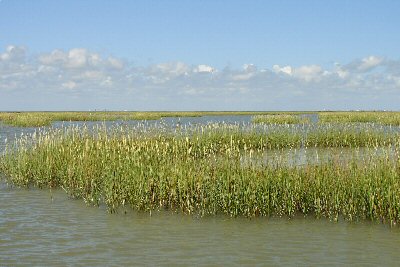
TPWD and its project partners are committed to restoring the marshes of Texas to maintain the recreation and commercial fisheries of this state. These projects are expensive, and TPWD needs the support of its various usergroups, especially fishermen, to continue these projects and to prevent vandalism from inhibiting the progress of this restoration program.
© Copyright Texas Parks and Wildlife Department. No part of this work may be copied, reproduced, or translated in any form or medium without the prior written consent of Texas Parks Wildlife Department except where specifically noted. If you want to use these articles, see Site Policies.